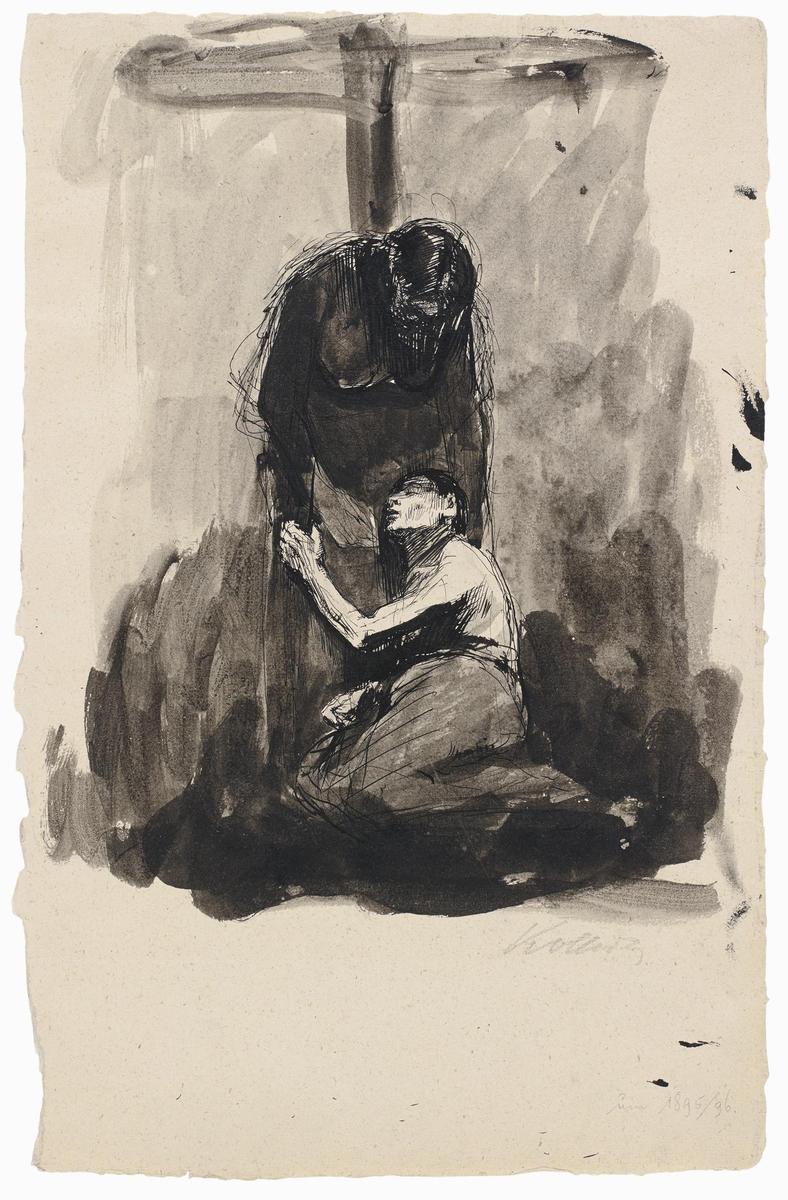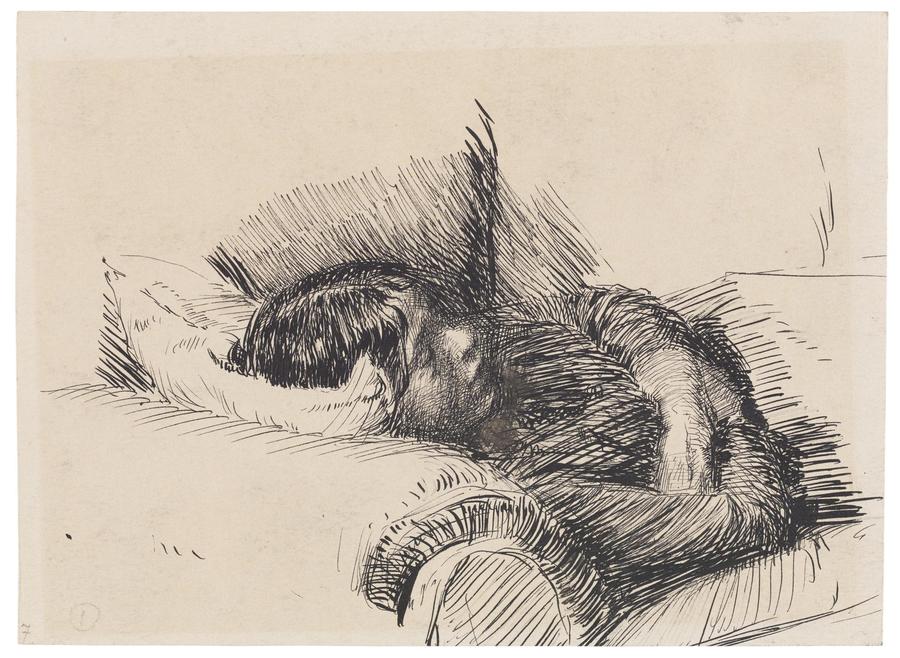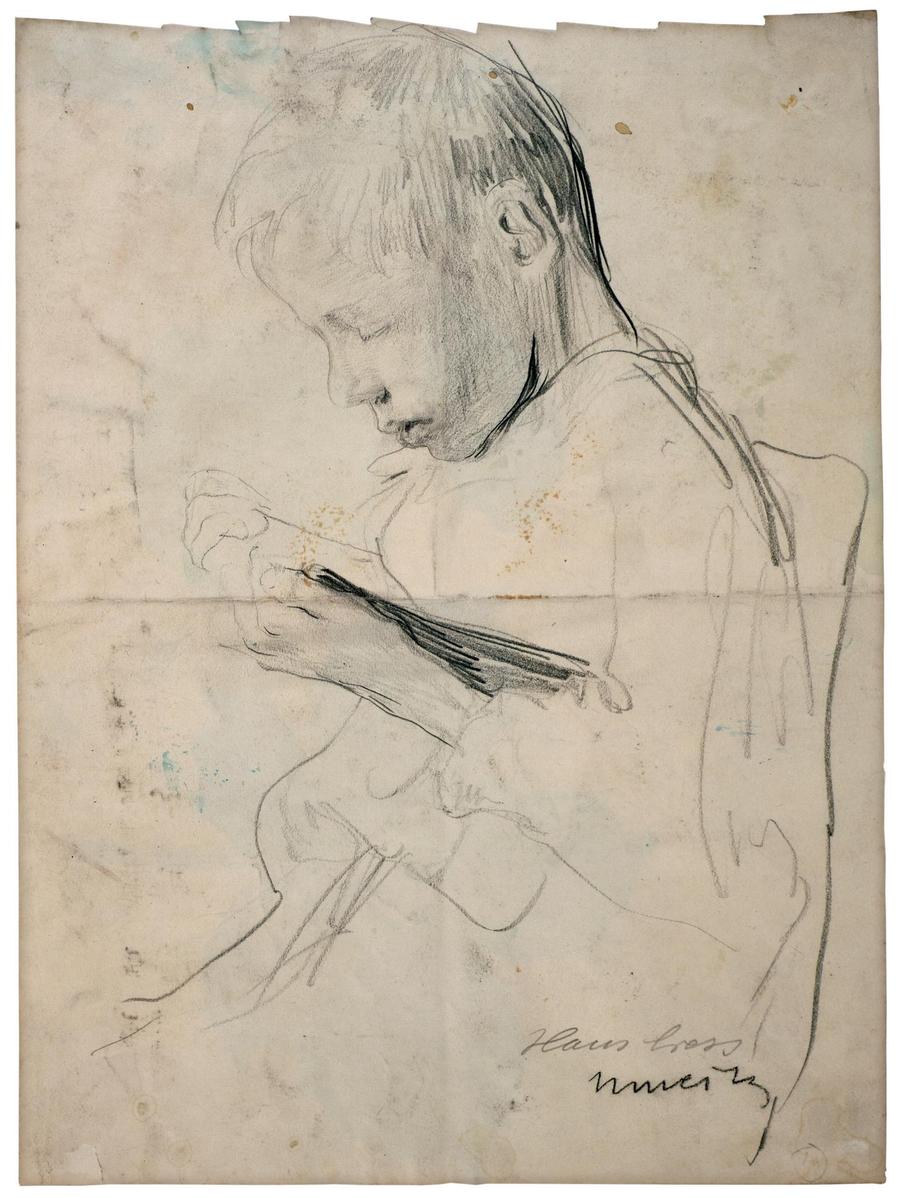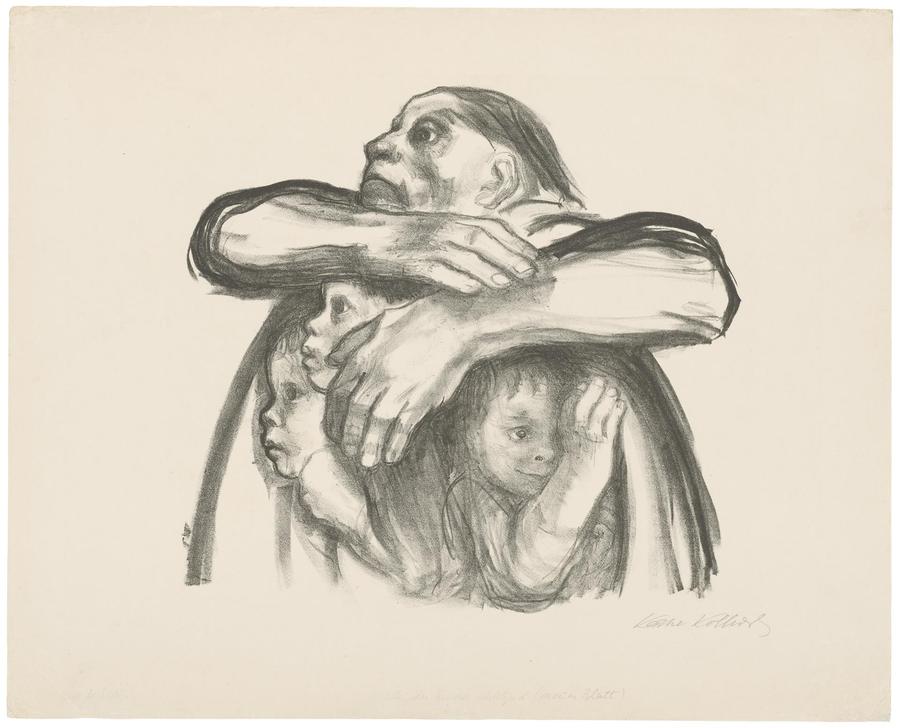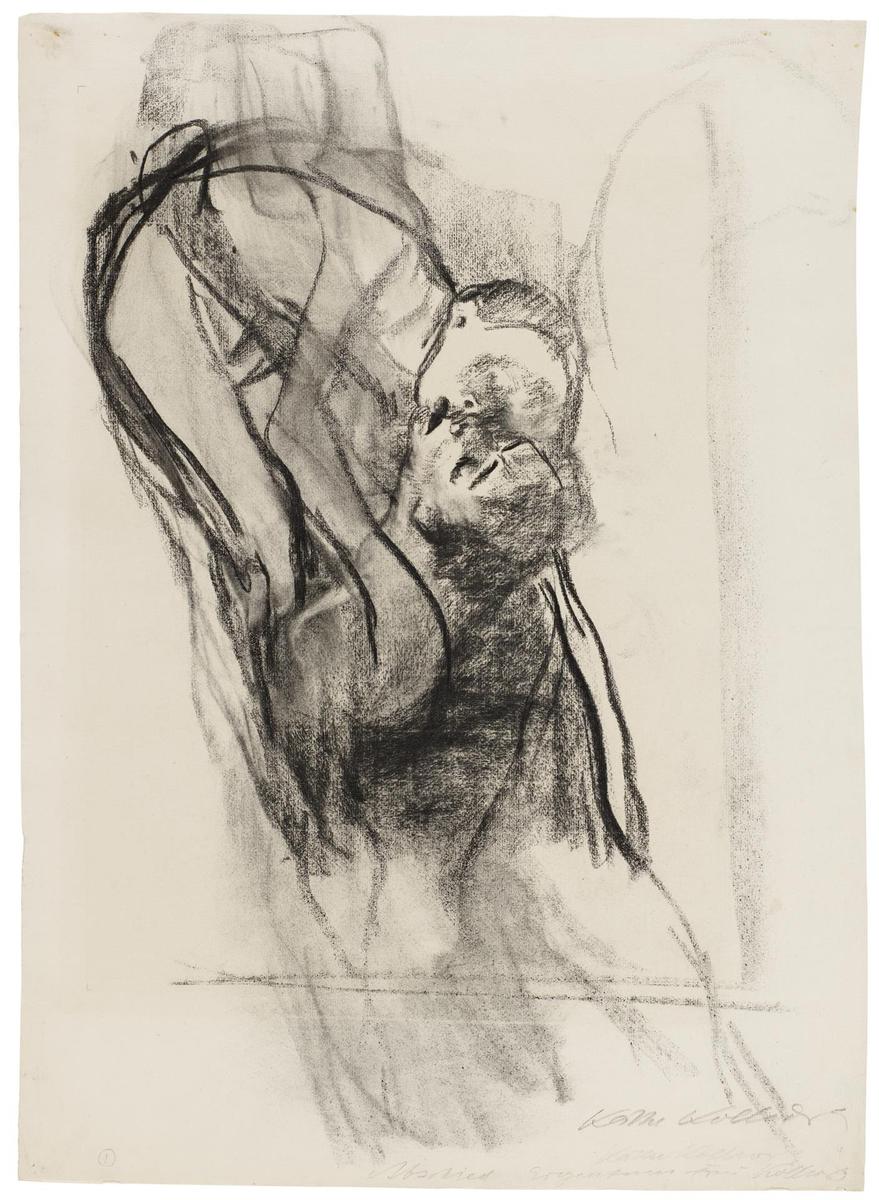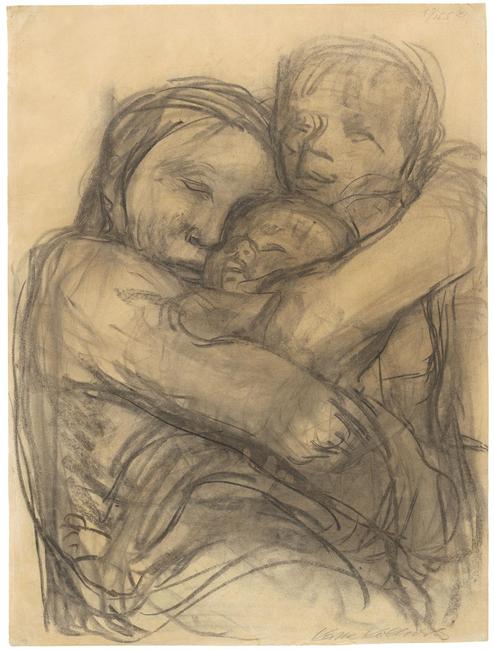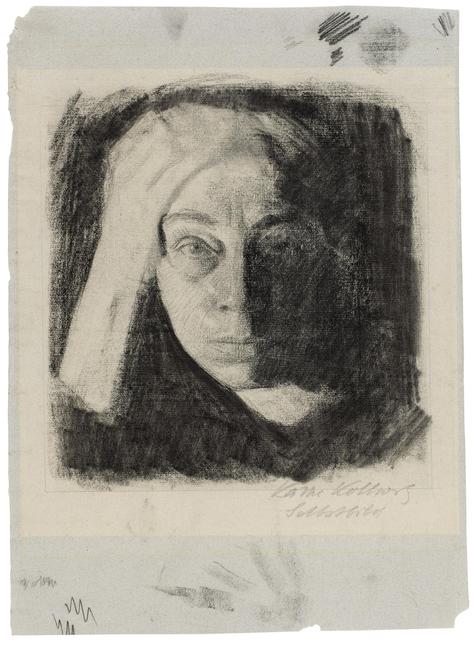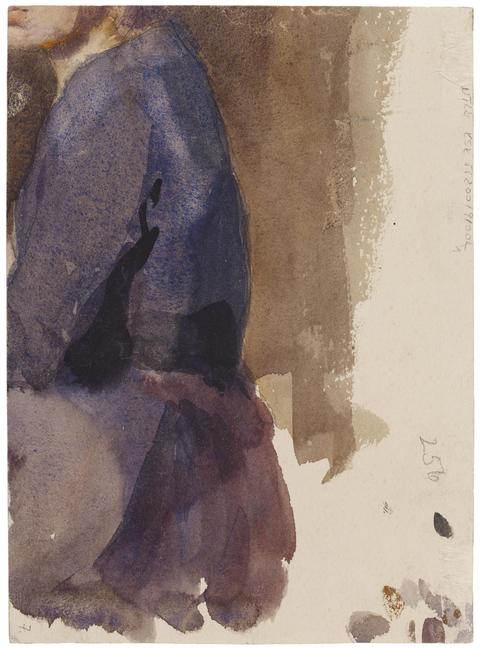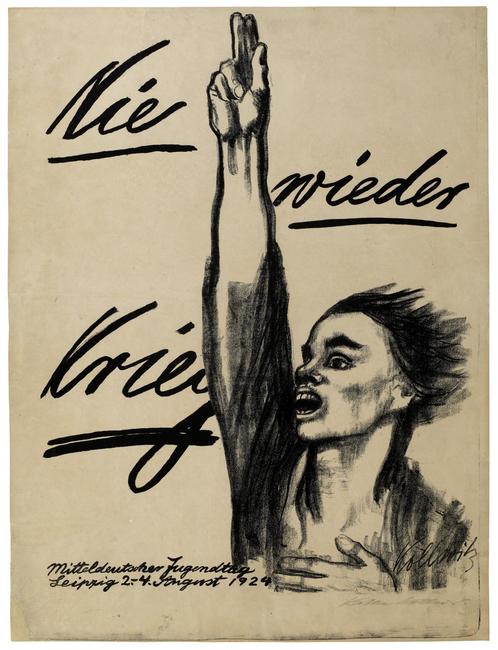Käthe Kollwitz Museum, Cologne, Germany
through June 19, 2022)
“I want to have an effect during this age in which people are so perplexed and in need of help.” - Käthe Kollwitz, diary entry from 1922
Käthe Kollwitz (1867–1945), considered one of the most important German artists of the first half of the 20th century, famously addressed themes of war, poverty and death in her empathetic works. Her world-renowned drawings, prints and sculptures also conveyed love, security and the struggle for peace.
Her over 50-year career spanned the tumultuous era from the German Empire to the First World War, from the Weimar Republic to National Socialism and up to the Second World War. Trained in the academic tradition, her work touches on the isms of modernity, yet Kollwitz developed her own unmistakable style. Evoking emotions from loss and sorrow to tenderness and motherly care, her haunting visual language still resonates today, borderless and timely in feeling just as devastating images emerge in recent days from Russia's brutal war on Ukraine.
A new monograph, Käthe Kollwitz: A Survey of Her Works 1888-1942 (upcoming from Hirmer Verlag), presents an overview of her artistic oeuvre. With more than 200 illustrations in chapters arranged by topic and an introduction about her life, the catalog shows the artist's primary works as well as selected drawings and rare state prints.
Coinciding with the monograph's release, the Käthe Kollwitz Museum in Cologne, Germany, is now showing (through June 19, 2022) select works in Kollwitz Context - The work behind the masterpieces. In this exhibition, Hannelore Fischer opens the archive drawers of the world's largest Kollwitz collection for her last show as long-time director of the museum. Together with her team, she arranged an exhibition of more or less double scope: while the artist's classics can be seen as excellent illustrations in the catalog on hand, lesser-known and rarely or never before shown treasures from the inventory complement the 14 book chapters on the wall. Sketches and preliminary drawings, studies and prints can be used to understand the creation of the artist's primary works in a variety of new contexts. The backs of well-known drawings also appear for the very first time and tell previously hidden stories.
While she documented the lives of the poor, working-class, and war-stricken, Kollwitz's own story informed her art, including the killing of her son Peter in the First World War, followed by the loss of her grandson, his namesake, in World War Two. She was the first modern woman to be elected to the Prussian Academy of Art as a full member, becoming a professor, only to have the appointment taken away with the rise of the National Socialists in 1933. Even while her pacifist and anti-fascist views kept her in fear of the Nazis, Kollwitz managed, at intervals, to produce art nearly up until her death in 1945, just days before the end of World War Two.
Kollwitz noted, "It is my duty to voice the sufferings of humankind, the never-ending sufferings heaped mountain high. This is my task, but it is not an easy one to fulfill."
